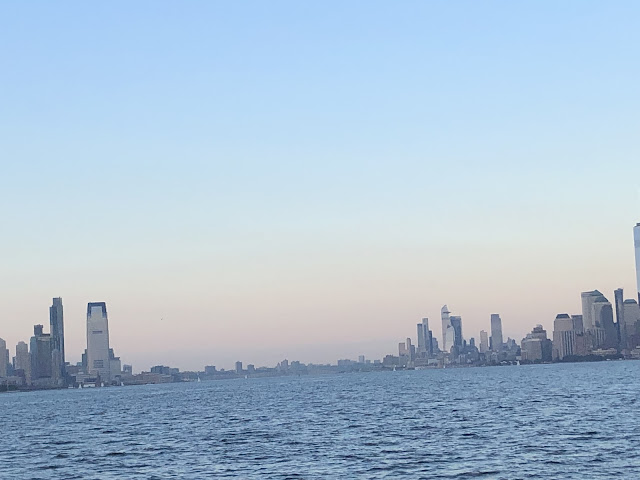I had a St. Patrick's Day sandwich.
No, I'm not talking about corned beef and cabbage. Rather, two fabulous cycling days sandwiched St. Pat's holiday, which featured rain, drizzle and more rain. Wednesday was sunny and clear, if a bit nippy, but yesterday was more like a day in the middle of May: sunny, with a slight breeze and temperatures that reached 22C (72F).
So, yesterday, I took advantage of the weather--and the extra hour of daylight at the end of the afternoon, thanks to Daylight Savings Time--and pedaled up to Greenwich, Connecticut and back.
Of course, being so early in the Spring (or not officially Spring, if you look at the calendar), some plant life isn't quite ready to express the weather. I didn't mind, though: the tree in that photo is still beautiful, I believe, in a New England sort of way.
I must say, though, it's odd to see bare trees as folks strolled along the common in T-shirts, tank tops, shorts or light, flowy skirts. Then again, I was wearing my lightweight knee-length "knickers" and a long-sleeved T-shirt--and fingerless gloves.
On Wednesday afternoon, after riding to the World Trade Center and taking the PATH train to Journal Square, Jersey City, I pedaled along Kennedy Boulevard down to Bayonne, where a park entrance enticed me to take a detour.
That park, the Richard A. Rutkowski Park, which includes the Hackensack Riverwalk, abuts Newark Bay, which forms part of the boundary between New Jersey and Staten Island. Now, this park isn't Big Sur or Acadia, but it has its own charm. For one thing, it's nicely landscaped and the paths are well-constructed. For another, it has something of the aesthetic of a post-industrial park like the Cement Plant Park in the Bronx but the waterfront in Rutkowski is still active: Ships come and go, and the docks and factories still hum with activity. Somehow all of that makes the sensation of riding by the water all the more calming, especially late in the day, at least for me.


From there, I pedaled down to the Bayonne Bridge for the first time in a few years. It had been closed so that the span could be reconfigured to allow larger ships to pass. I am happy to report that the reconstruction includes a bike and pedestrian lane that's better than the old one. For one thing, it's wider and better-maintained. For another, it is on the east side of the span, which offers better views than the old one on the west side. Best of all, it lets you off at Trantor Place, where directions to the Ferry (to Manhattan), Stadium and Snug Harbor Cultural Center are clearly marked.
My only criticism of the new lane is that it's a bit difficult to access from the Bayonne (New Jersey) side. The entrance ramp rises from Kennedy Boulevard between 7th and 6th Streets. It's set back and not clearly marked, and because Kennedy is interrupted by a highway entrance and takes a turn on the other side of it, it's easy to lose your way. (If you continue to go straight, you'll end up on a different street altogether.
From the bridge, I rode Richmond Terrace, which winds along the North Shore of the Island and passes Snug Harbor. The main problem with the Terrace, for cycling, is that it's narrow and almost everyone drives well over the speed limit. There's been talk of constructing a cycle lane alongside it, or on parallel roads, to allow a safe cycle route from the Bridge to the Ferry.
So my St. Patrick's Day "sandwich" included enough riding, I think, to burn off the calories I consumed on the day itself--all of them from Irish (or Irish-American) delicacies!


.jpg)



















